Chad / République du Tchad / جمهورية تشاد – Let’s explore here
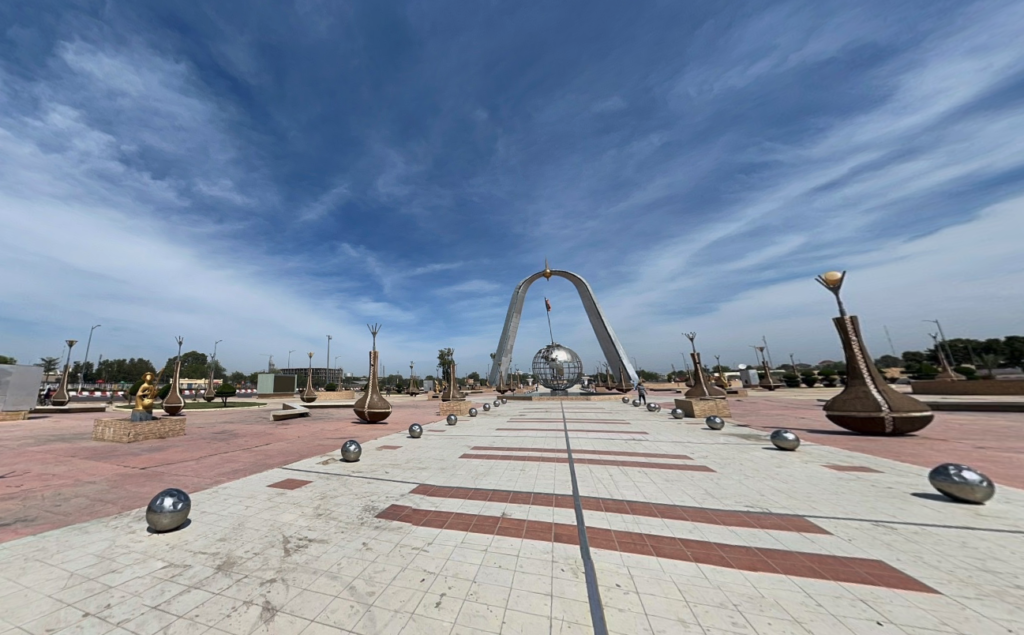
What’s it like in Chad?
Chad is a large, landlocked country in west central Africa, about five times the size of the UK. The terrain is comprised of Saharan desert in the north, and savannah in the south of the country. The Tibesti Mountains in the north are home to Emi Koussi, the highest mountain in the Sahara, at 11,204 feet (3,415 m). Lake Chad, located in the west of the country was at one time larger than the Caspian Sea (the world’s largest inland body of water). However, due to overgrazing and desertification, it has almost disappeared.
Chad has a long, rich and very troubled history, involving much political instability, resulting in it now being one of the least developed and poorest countries on the planet.
The population of Chad is around 19 million people (2024), about 1.6 million of whom live in the metropolitan area of the capital, N’Djamena – Africa’s most polluted city. Chad shares land borders with Cameroon, Central African Republic, Libya, Niger, Nigeria and Sudan.
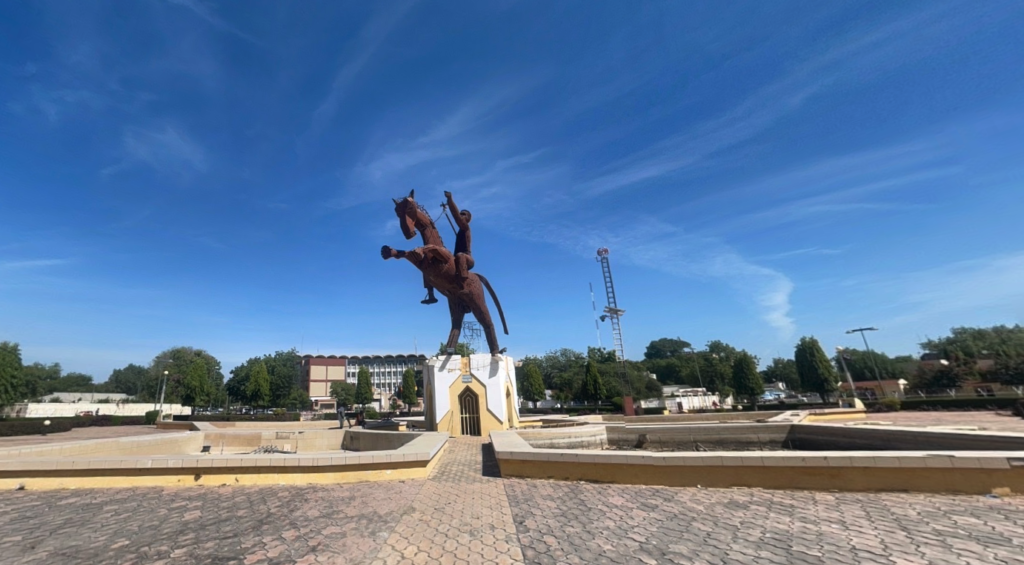
A bit about the history of Chad
Early History and Indigenous Groups
Chad has a diverse history shaped by various ethnic and cultural groups. Before European colonisation, the region was inhabited by numerous groups such as the Kanuri, Zaghawa, Toubou and Arab peoples. These groups lived in complex societies and engaged in trade, agriculture and pastoralism. Chad’s location made it a crossroads for various African empires, including the Kanem-Bornu Empire, which ruled parts of Chad from the 9th to the 19th centuries.
Colonial Period and French Rule
In the late 19th century, European powers expanded their control over central Africa. Chad became a part of French Equatorial Africa after it was colonised by France in 1900. During French rule, the region was subject to economic exploitation, with forced labour and a focus on extracting resources such as cotton and minerals. The French also introduced a system of indirect rule, which disrupted existing political structures. Resistance to colonial rule occurred, but the French maintained control until independence.
Path to Independence
After World War II, the push for decolonisation in Africa grew stronger. Chad was granted a degree of autonomy within the French Union in 1946. In 1958, it became a self governing republic within the French Community, and on 11 August 1960, Chad gained full independence from France. François Tombalbaye, the leader of the Union of Democratic Forces, became the first president of Chad.
Early Political Instability
Following independence, Chad experienced political instability. François Tombalbaye’s government was characterised by authoritarian rule, and in the early 1970s, he attempted to suppress political opposition and decentralise power. This led to tensions with various ethnic groups, and in the 1970s, Chad was gripped by a civil war, largely between the government forces and rebel factions in the north and south.
The Chadian Civil War and Regional Conflicts
From the 1970s to the 1990s, Chad endured prolonged civil wars, with different factions vying for power. The conflict was further complicated by the involvement of neighbouring countries, including Libya, which supported rebel groups in the 1980s in a bid to expand its influence. In 1975, an uprising ousted Tombalbaye, and a series of military regimes took power. In 1982, Hissène Habré, backed by France, took control after a coup and ruled the country until 1990. His rule was marked by severe human rights abuses and a brutal crackdown on opposition.
The Rule of Idriss Déby
In 1990, Hissène Habré was overthrown by Idriss Déby, who came to power with the support of the French military. Déby’s government, which lasted until his death in 2021, was characterised by its focus on maintaining political control and suppressing dissent. While Déby initially brought some stability to Chad, his rule was marked by authoritarianism, corruption and internal conflicts. The country remained involved in regional conflicts, particularly in Sudan and Libya.
Recent Developments and Death of Idriss Déby
In April 2021, Idriss Déby died from injuries sustained in battle while fighting rebels in the north of Chad. His death led to a military takeover, with his son, Mahamat Idriss Déby, assuming leadership of the country. The country’s political future remains uncertain as it continues to grapple with security challenges, including insurgencies from rebel groups, particularly in the east and north.
Modern Chad
Chad remains one of the poorest countries in Africa, with an economy largely dependent on oil, agriculture and livestock. Despite its vast natural resources, including uranium, the country faces significant challenges in terms of development, education and healthcare. Security remains a major concern, particularly due to the presence of insurgent groups and instability in neighbouring regions, including the Central African Republic and Libya. Efforts to foster stability and improve governance continue, but the country’s political future is uncertain.
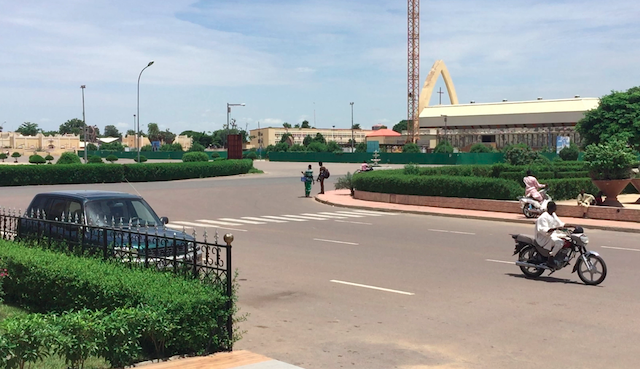
Chad road trip
Map of our road trip through Chad
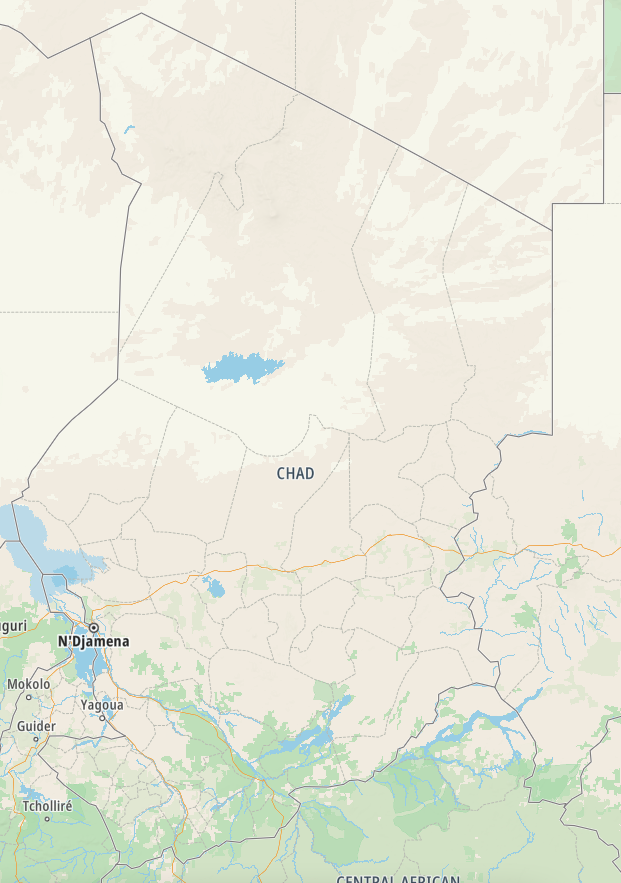
Our current planned route takes us close to Chad, and we may make a detour to visit the country, probably from either Niger or Cameroon. Although due to the current turbulence in the region, we may visit at another time.
Whenever we do visit, hopefully our journey will improve our knowledge of this intriguing and beautiful country, and enable us to meet some interesting people. We’ll be updating this page at that time – don’t forget to check back 🙂
What’s it like to drive in Chad?
They drive on the right hand side of the road in Chad. In the main, roads are very poor, with many being unsurfaced dirt tracks. Driving standards are also poor.
To travel outside of the capital, N’Djamena, you must get authorisation from the Ministry of the Interior, which is normally granted without difficulty after a few days.
Do you require an international driving permit in Chad?
We’ve created a dedicated page to driving abroad, which answers this question, and more, which you might find helpful.
Can you use your UK driving license when driving through Chad?
You must convert your UK driving licence to a Chadian one to drive in Chad.
We’ve created a dedicated page to driving abroad, which answers this question, and more, which you might find helpful.
Do I need a carnet de passages to drive in Chad?
We’ve created a dedicated page to driving abroad, which answers this question, and more, which you might find helpful.
What is the weather like in Chad?
The rainy season in Chad is from May to early October. The dry season is from November to March. The best time to visit is between December and January. The worst months are May to September.
What currency do they use in Chad?
In Chad they use the Central African CFA franc, although US Dollars are also accepted. Cash is widely used. The use of credit / debit cards is not widely accepted outside of the capital, N’Djamena. Travellers cheques are not readily accepted. There are few ATMs in cities and towns throughout the country.
The Central African CFA franc is used in Cameroon, Central African Republic, Chad, Republic of Congo, Equatorial Guinea and Gabon.
You should make yourself aware of the amount that your bank charges you for using credit and debit cards abroad. Often credit cards are cheaper for purchasing items directly, and for withdrawing cash from ATMs.
What language do they speak in Chad?
They mainly speak Arabic in Chad, although French is the official language, however it’s not widely spoken. English is not widely spoken.
What time zone is Chad in?
Remember, when you’re planning your next trip to take a look at what time zone it’s in.
Do I need a visa to visit Chad?
We’ve created a dedicated, more comprehensive page on visas, which you should find helpful. Check it out!
Is wild camping legal in Chad?
Yes, wild camping is fine in Chad.
What plug / socket type do they use in Chad?
In Chad they use plug / socket types D, E and F.
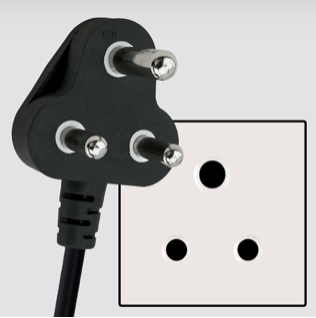


Health issues in Chad
Is it safe to drink water in Chad?
No, it is not safe to drink tap water in Chad. Bottled water is readily available throughout the country.
What vaccinations are required for Chad?
This NHS website is kept up to date with all relevant information on vaccinations in Chad.
Phones in Chad
What is the country calling code for Chad?
The country calling code for Chad is +235
What are the emergency phone numbers in Chad?
- The emergency number for police in Chad is: 17
- In Chad, the emergency number for ambulance is: 2251-4242
- The emergency number for fire in Chad is: 18
If you’ve got some useful info that you’d like to share, let us know!
And don’t forget to check out all the other pictures!
